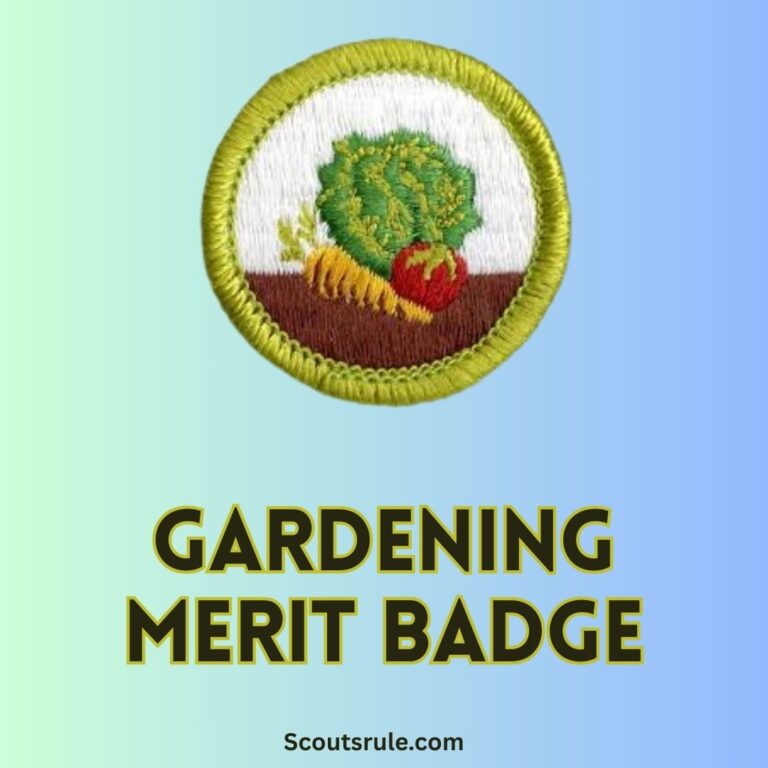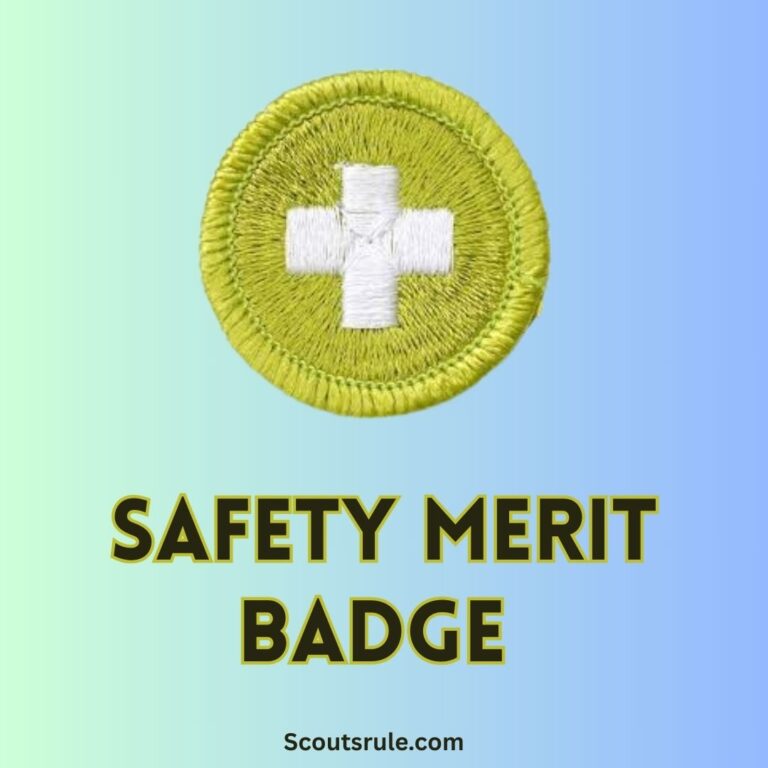
This guide is designed to help you explore the vital concepts, techniques, and responsibilities involved in search and rescue (SAR) operations. It offers an in‑depth overview of the badge’s purpose, common requirements, project ideas, and strategies for documenting your work. Remember that this guide is intended as a study aid to supplement the official Boy Scouts of America merit badge pamphlet. Always work closely with your merit badge counselor and refer to the latest official guidelines to ensure your projects and documentation meet local council standards.
Post Contents
- Introduction: The Critical Role of Search and Rescue
- 2. Purpose and Objectives of the Search and Rescue Merit Badge
- 3. Overview of the Badge Requirements
- 3.1 Hazard Identification and Safety Protocols
- 3.2 First-Aid and Emergency Response Procedures
- 3.3 The Incident Command System (ICS) and SAR Organization
- 3.4 Map Reading, Grid Systems, and Coordination Methods
- 3.5 Simulated SAR Scenarios and Practical Exercises
- 3.6 Career Exploration in Search and Rescue
- 4. Hands‑On Projects and Field Activities
- 5. Documentation, Record Keeping, and Presentation Strategies
- 6. Additional Tips, Resources, and Future Applications
- Conclusion: Lifelong Lessons in Search and Rescue
Introduction: The Critical Role of Search and Rescue
Search and rescue operations are vital to public safety. Whether responding to a lost hiker in a remote forest, assisting a stranded swimmer at a lake, or coordinating urban rescues, SAR teams save lives every day. The Search and Rescue Merit Badge introduces you to the foundational skills necessary to help in emergencies, understand how organized rescue operations are conducted, and work safely as part of a team. Importantly, this merit badge is a learning experience designed to build your abilities and awareness—it does not certify you as a professional rescuer. Instead, it teaches you how to assess risk, respond safely, and contribute effectively within a structured system should an emergency arise.
2. Purpose and Objectives of the Search and Rescue Merit Badge
Earning the Search and Rescue Merit Badge will help you:
- Understand Hazards and Safety Procedures: Learn how to identify the hazards inherent in wilderness, urban, and aquatic environments. Understand the necessary precautions and personal safety practices to prevent injuries during rescue efforts.
- Develop First-Aid and Emergency Response Skills: Gain basic knowledge of how to administer first aid to common injuries that may occur during rescue operations, including snakebites, dehydration, shock, environmental emergencies (such as hypothermia and heatstroke), sprains, and blisters.
- Familiarize Yourself with the Incident Command System (ICS): Grasp how rescue operations are organized and managed. Learn about roles, responsibilities, and communication methods that enable a coordinated response.
- Learn Map Reading and Navigation Techniques: Study how to read maps using grid systems like the Universal Transverse Mercator (UTM) system, which is often used in SAR planning.
- Practice Simulated SAR Scenarios: Engage in practical exercises that simulate real search and rescue situations. This will help you build teamwork, situational awareness, and decision‑making skills under pressure.
- Explore Career Opportunities: Investigate how the skills you learn might apply to future careers—such as lifeguarding, emergency management, firefighting, or working with specialized SAR teams.
Through this merit badge, you develop both technical knowledge and personal attributes that contribute to responsible citizenship and preparedness in emergencies.
3. Overview of the Badge Requirements
The official requirements for the Search and Rescue Merit Badge cover several distinct areas. While you should always consult the current BSA pamphlet, many Scouting communities break the badge down into the following areas:
3.1 Hazard Identification and Safety Protocols
- Objective: Explain to your counselor the hazards you are most likely to encounter while participating in search and rescue activities. These hazards might include:
- Rugged terrain, adverse weather conditions, poor visibility, and ecological hazards (snakes, wild animals).
- Environmental challenges such as water hazards, steep slopes, and open fields.
- Discussion Points: Describe how you can anticipate, help prevent, mitigate, and respond to these hazards. Include strategies such as conducting spot assessments and adhering to proper personal protective practices (PPE).
3.2 First-Aid and Emergency Response Procedures
- Objective: Discuss with your counselor the first-aid requirements for common injuries and emergencies that can occur during SAR missions. Typical injuries include:
- Snakebites, dehydration, shock, hypothermia/heatstroke, blisters, and sprains.
- Discussion Points: Explain the proper steps to take immediately after an injury is sustained. Emphasize how applying first aid can buy time until professional help arrives, and how to check for signs of life if a subject is unresponsive.
3.3 The Incident Command System (ICS) and SAR Organization
- Objective: Learn about the Incident Command System (ICS) used in organized rescue operations.
- Discussion Points: Explain roles such as the incident commander, team leaders, and individual searchers. Describe how planning and communication are conducted through an Incident Action Plan (IAP) and how teams coordinate their efforts.
- Practical Component: You may work with your counselor or a local emergency services representative to review a sample IAP or to discuss how team roles are assigned during a rescue operation.
3.4 Map Reading, Grid Systems, and Coordination Methods
- Objective: Develop skills to read maps and understand grid systems, including the Universal Transverse Mercator (UTM) system.
- Discussion Points: Explain what UTM coordinates are, how to plot a search area, and how maps contribute to the efficiency of search missions.
- Practical Component: Practice by marking key waypoints on a sample map and planning a hypothetical search route.
3.5 Simulated SAR Scenarios and Practical Exercises
- Objective: Engage in simulated search and rescue exercises to practice the skills you’ve learned.
- Discussion Points: Participate in a series of simulations that involve the “reach, throw, row, and go” sequence. Learn the importance of staying safe and following proper protocols.
- Practical Component: Through role‑playing exercises and mock rescue drills, demonstrate your ability to make safe decisions while assisting others. Emphasize teamwork, communication, and rapid response.
3.6 Career Exploration in Search and Rescue
- Objective: Investigate and discuss career paths that require SAR skills.
- Discussion Points: Examine careers such as lifeguarding, emergency management, firefighting, paramedicine, and search and rescue coordination. Learn what additional training and certifications are required in these fields.
- Practical Component: Interview a local professional involved in search and rescue or emergency management, or attend a related seminar if available.
4. Hands‑On Projects and Field Activities
Practical application is critical in building your search and rescue skills. Consider the following projects:
Project 1: Hazard and First-Aid Scenario Simulation
- Objective: Demonstrate how you would respond to an emergency by simulating a scenario. For example, a mock incident in which a person sustains an injury while hiking.
- Steps:
- Display your understanding of the hazards involved by outlining a scenario in your journal.
- Describe or role-play the immediate first-aid response—whether it’s treating a snakebite, responding to dehydration, or stabilizing someone in shock.
- Discuss the steps you would take to ensure your own safety before initiating a rescue.
- Documentation: Record the scenario, include a flowchart of the rescue process, and attach any photos or videos of your drill (if conducted under supervision).
Project 2: Practice with the Incident Command System
- Objective: Learn the basics of how an organized SAR operation is coordinated.
- Steps:
- With the guidance of your merit badge counselor or a local SAR representative, review a sample Incident Action Plan (IAP).
- Role-play the assignment of roles within a search team. Explain how the incident commander would direct a team, assign search sectors, and gather and relay information.
- If possible, participate in a local SAR exercise or simulation.
- Documentation: Write a detailed report on the exercise, illustrate the IAP with diagrams, and include reflections on what you learned about leadership and coordination in emergencies.
Project 3: Map Reading and UTM Coordination Exercise
- Objective: Develop map–reading skills essential for search and rescue.
- Steps:
- Use a local topographic map and identify critical features such as water bodies, trails, and ridges.
- Practice plotting UTM coordinates and divide the map into sectors for a hypothetical hasty search.
- Plan a search route for a given scenario, explaining your reasoning for the chosen sectors.
- Documentation: Provide annotated maps showcasing your search plan, and include a written explanation of the methods used to mark the coordinates and plan the route.
Project 4: Interview on SAR Careers and Techniques
- Objective: Learn from professionals about how SAR skills are applied in real-life operations.
- Steps:
- Arrange an interview with a local search and rescue team member, lifeguard, or emergency services officer.
- Prepare questions on topics such as hazardous conditions, the importance of first aid, and the role of teamwork in rescue efforts.
- Summarize the information in a written report or recorded interview.
- Documentation: Include a transcript or summary of the interview, along with your reflections on how this information influenced your understanding of SAR work.
5. Documentation, Record Keeping, and Presentation Strategies
Accurate documentation is essential to demonstrate your progress and to help you reflect on your learning. Consider these strategies:
- Maintain a Detailed SAR Journal: Write daily or weekly entries that describe your practice sessions, scenario simulations, and any research or interviews you conduct. Include dates, times, and the conditions under which each exercise was performed.
- Visual Documentation: Supplement your journal with photographs, annotated maps, video clips, and diagrams that document each project stage. These will serve as visual evidence of your skills and learning.
- Organize a Final Portfolio: Combine your journal, maps, research notes, project reports, and any multimedia elements into a well-organized binder or digital folder. Use clear headings and a table of contents to facilitate easy review by your merit badge counselor.
- Final Presentation: Prepare a concluding presentation that summarizes your experiences. This might be a slide deck, poster, or oral presentation accompanied by visual aids. In your presentation, discuss what you learned from each project, the importance of preparedness in rescue situations, and how these experiences can guide your future actions and career choices.
6. Additional Tips, Resources, and Future Applications
Additional Tips
- Practice Regularly and Safely: The skills you learn require consistent practice. Always conduct practice drills under appropriate supervision and in safe conditions.
- Work as a Team: Remember that search and rescue operations are rarely solo efforts. Practice coordinating with partners and learn how effective communication can save lives.
- Stay Informed: Keep up-to-date with local emergency services protocols and SAR techniques via workshops, online courses, and training sessions offered by local agencies.
- Reflect on Mistakes: Use each practice session as a learning opportunity. Reflect on what worked well and what could be improved. Seek constructive feedback from supervisors and peers.
- Emphasize Safety: Never compromise your safety. Understand that it is far more important not to become a victim when attempting to help someone else.
Recommended Resources
- Official BSA Materials: Always start with the official Search and Rescue Merit Badge pamphlet from the Boy Scouts of America.
- Government and Emergency Management Websites: Websites such as FEMA (Federal Emergency Management Agency) or local police and fire department pages provide valuable insights and updated protocols in emergency response.
- Instructional Videos and Online Tutorials: Platforms like YouTube have channels and training videos from certified SAR teams that can clarify various rescue techniques and safety measures.
- Local SAR Organizations and Workshops: Contact local search and rescue organizations for potential workshops or volunteer opportunities that can offer hands‑on experience.
- Books and Guides: Explore titles on wilderness survival, first-aid in emergencies, and organized search and rescue operations to expand your theoretical understanding.
Career Connections
Through the SAR merit badge, you can uncover career paths and volunteer opportunities in:
- Lifeguarding and Water Rescue: Positions that involve preventing drowning and aiding water-based emergencies.
- Emergency Management: Roles in planning and executing response strategies for natural disasters and large‑scale emergencies.
- Firefighting and Paramedicine: Fields where rapid rescue and comprehensive first aid are critical.
- Search and Rescue Coordination: Positions within specialized SAR teams in rural or urban settings.
- Public Safety and Law Enforcement: Careers focused on risk assessment, incident command, and community protection.
Investigate these fields through career fairs, informational interviews, and local volunteer programs to see how the skills you develop now can translate into future opportunities.
Conclusion: Lifelong Lessons in Search and Rescue
Earning the Search and Rescue Merit Badge is an immersive journey into one of the most critical aspects of emergency response. Through learning to identify hazards, mastering first-aid techniques, understanding the structure of organized rescue operations via the Incident Command System, and practicing map-reading and coordination methods, you develop a robust set of skills that can—if needed—help save lives. As you document your practice sessions, reflect on simulated scenarios, and engage with professionals in the field, you build confidence in your ability to act responsibly and calmly in emergencies.
This merit badge not only champions technical competence and teamwork but also instills in you the values of public service, leadership, and continuous learning. By completing these requirements, you demonstrate a commitment to being prepared and informed—a commitment that will serve you throughout your life.
May your experiences with the Search and Rescue Merit Badge inspire you to pursue further training, to always prioritize safety (both yours and that of others), and to remain ready to assist should an emergency arise. Remember: effective search and rescue requires continuous practice, strong teamwork, and a deep sense of responsibility—and these are qualities that will guide you to become a capable and compassionate leader.
Happy rescuing, and may your commitment to safety and community service light your path toward a future of preparedness and positive action!

Hi, Robin here, A former lead Scout and here I share my inspiring stories about USA Scouts, leadership, adventure, how to guides and more.






